Reconstruction of Ostia Antica
Ostia Antica (derived from os, the Latin for “mouth”) was the preeminent harbor city of ancient Rome, with its geographical location being around 19 miles from the ‘eternal city’. And while in modern circumstances, the site lies around 2 miles away from the sea, due to silting, the area is still home to a flurry of well-preserved ancient Roman architectural specimens, frescoes, and mosaics.
Taking advantage of these extant ‘legacies’ of Roman history, the resourceful folks over at Altair4 Multimedia have digitally reconstructed the ancient harbor city of Ostia Antica – and the glorious result is there to behold.
Another nifty reconstruction video made by Colonia Ostiensis also captures the sheer scale of this ancient harbor city, which possibly reached its peak population of around 50,000 by the 2nd century AD, at the apical stage of the Roman Empire.
And in case one is interested in illustrations, noted French archaeologist Jean-Claude Golvin made a series of watercolor drawings that aptly capture the scale and essence of Ostia Antica.
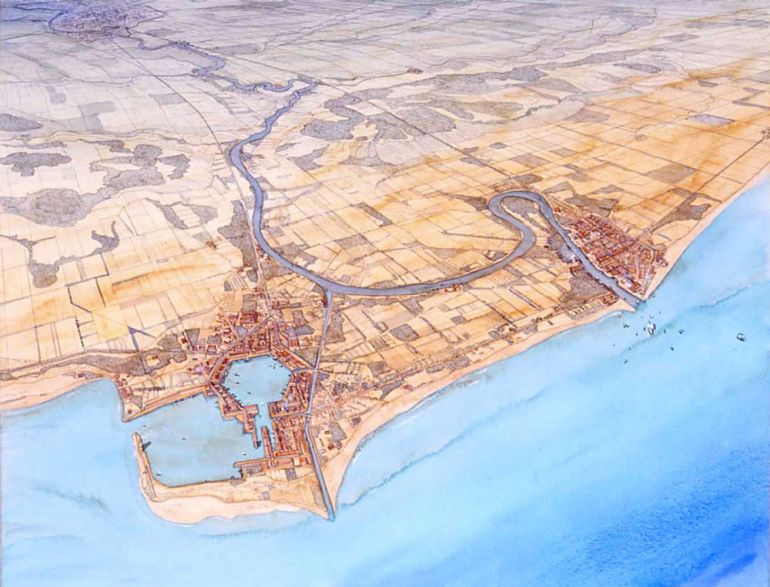
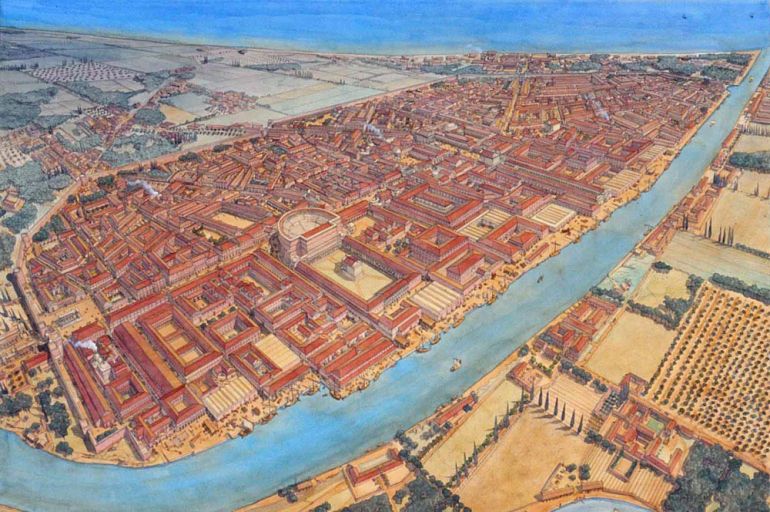
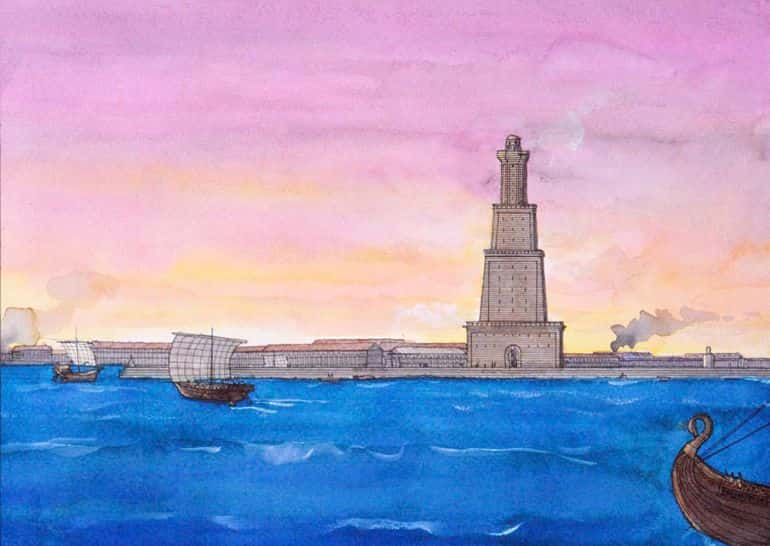
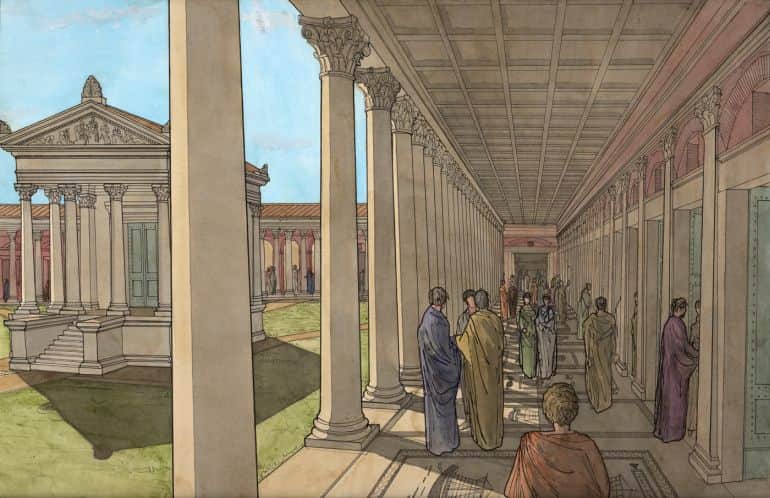
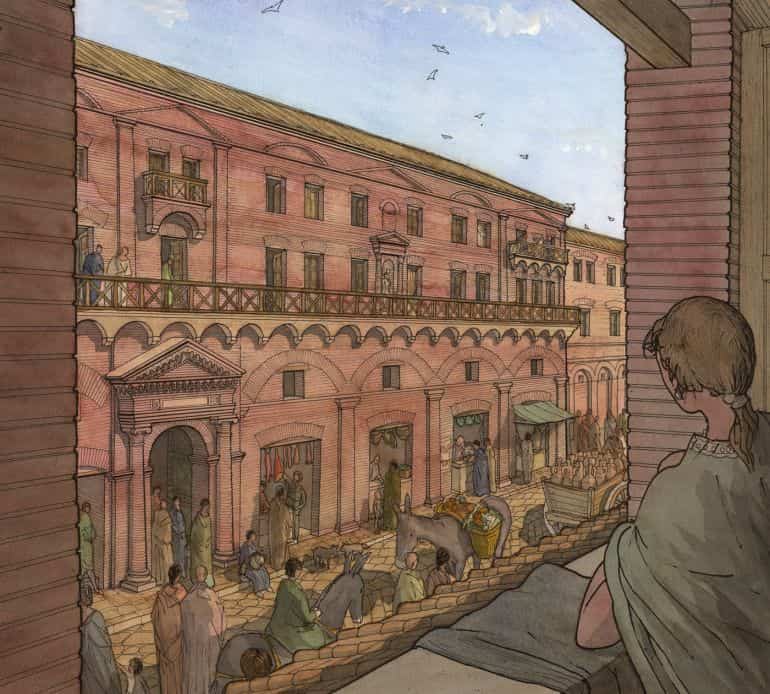
History of Ostia Antica
Legend and Founding (10th century – 4th century BC)
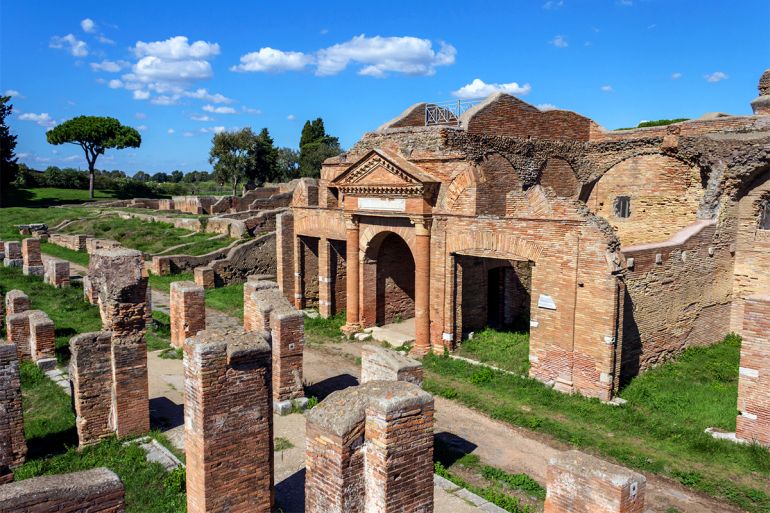
According to some legends and conjectures, put forth by authors such as Livius and Cicero, Ostia may have been Rome’s first colonia – a Roman outpost that secured their newly conquered territories. The tradition relates to how Rome’s fourth king Ancus Marcius, established this outpost in the 7th century BC after destroying Ficana, an ancient settlement that was just 11 miles from Rome (which also had its harbor along the Tiber).
Interestingly enough, the history of Ostia possibly harks back to a time period before the emergence of even the Roman Kingdom, when the area was home to a small village in the Early Iron Age of the Italian peninsula, circa 10th century BC.
In any case, the archaeological evidence of the oldest settlement at Ostia corresponds to a castrum (Roman structures for military defensive positions), built and developed between 396 and 267 BC. Possibly constructed as a defense against the local pirates, the complex in itself measured 636 ft x 410 ft (equivalent to more than four American football fields). It was surrounded by walls made of large tufa blocks while being intersected by two main streets.
The Middle Period of the Republic (3rd century – late 2nd century BC)
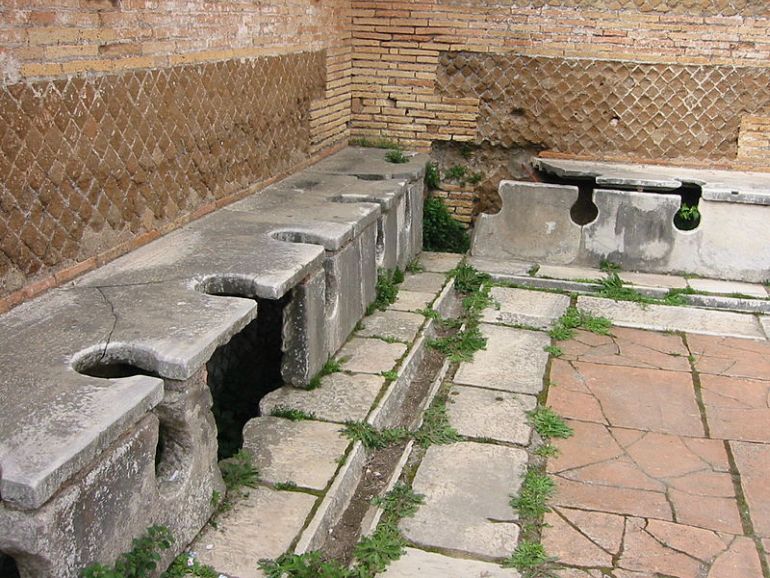
By the 3rd century BC, Ostia was transformed into a naval base, so much so that it became the seat of one of the officially appointed commanders of the Roman fleet, who was known as the quaestor Ostiensis. Suffice it to say, the office became more important with the advent of the Punic Wars, and as such Ostia emerged as one of the strategic military harbors of the Romans.
However by the 2nd century BC, especially after Carthage was subdued, the coastal city was reintegrated as a commercial port. This economic decision was influenced by the influx of population, fueled by the Roman military successes of the era.
Thus Ostia became the main entry point for the overseas grain that was imported from Sicily and Sardinia. As a result, the quaestor had to revamp his military office for something more ‘civilian’ in nature, and thus he became the overseer of the grain importing trade.
Politics and Culture (1st century BC – 1st century AD)
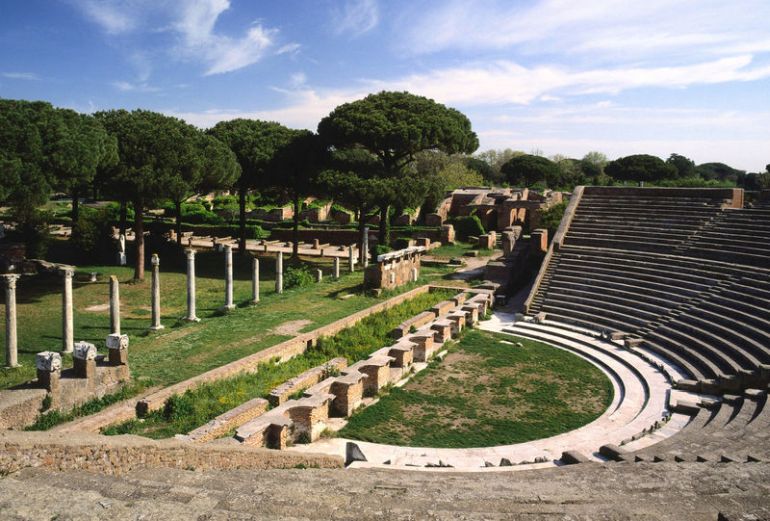
Ostia was the scene of fierce fighting between the forces of Gaius Marius and Sulla in the Roman civil war of 87 BC, as the Marian soldiers laid siege to the harbor city and then ultimately plundered it. After 18 years, the pirates were successful in plundering the city (in 69 BC), and they also destroyed much of the consular war fleet. But the timely intervention of Pompey the Great averted a disaster as he went on to raise an army by Lex Gabinia that defeated the pirates.
The stability brought forth by Pompey possibly ushered in the advent of new construction projects, including the building of new walls for protecting the city. Now interestingly, in spite of Ostia’s presumed colonia status, the city was governed by Rome, at least till 63 BC.
However, with the founding of new walls, the settlement was finally endowed with its own government. This symbolic gesture was accompanied by the construction of town halls and various temples.
But it was Agrippa, the close confidante of Augustus, who shaped the ‘civic’ fortunes of the coastal city, by building a theater (in 12 BC) that could accommodate 3,000 people. In fact, Ostia must have been conferred a special status, given the predominance of marble used for the structure, which was considered as an exceptional building material.
This was followed by the establishment of a proper Forum, accompanied by the newly constructed Capitolium, Temple of Jupiter, and even a synagogue. And by the late 1st century AD, during Vespasian’s reign, the walls of Ostia were transformed into a functioning aqueduct that carried water to the main urban center.
The profusion of so many public projects ultimately inspired the change of the (symbolically) military office of quaestor Ostiensis into procurator annonae – basically translating into ‘procurator of the grain supply’.
Portus and Slaves (1st century AD – 3rd century AD)
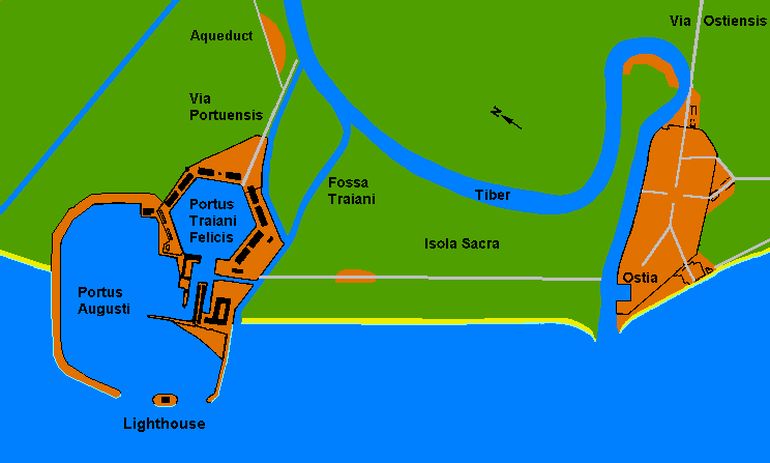
By the middle of the 1st century AD, Emperor Claudius oversaw the construction of an artificial harbor, a few miles north of the main city. Built to supplement the port of Ostia, this project transformed the entire area into a thriving harbor district, which was even complemented by an artificial island known as Isola Sacra (or Sacred Island). The new harbor – known as Portus, had its own lighthouse, while the freshly dug basin made it easier for the larger ships to be sheltered by the inward banks.
Now from the historical perspective, it was the commercial potential of these combined sectors of the coastal district that ultimately catapulted Ostia’s status as Rome’s main harbor. And given the range of overwhelming maritime features added to these ancient ports, the Imperial office of procurator Portus Ostiensis was changed to procurator Portus Utriusque (pertaining to ‘both harbors’).
In fact, the building boom and great prosperity of Ostia continued until the earlier part of the 3rd century. This momentous rise of commercialism was accompanied by the large-scale import of slaves from far and wide lands.
According to various estimates, almost 17,000 people among the peak 50,000 population were slaves – who not only worked in households but also in the harbor and storage facilities. These slaves were accompanied by middle-class freemen and freed immigrants, who hailed from varied regions like North Africa, Gaul, Spain, and even Egypt and Syria. The latter immigrants mainly played their roles as traders and merchants.
The Gradual Decline (post 4th century AD)
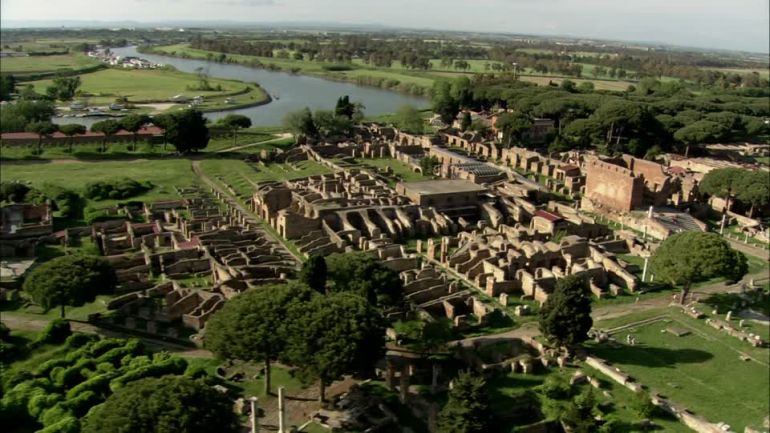
Unfortunately for Ostia, by the time of Constantine, Portus and its neighborhoods were integrated as a newly independent city, renamed as Civitas Flavia Constantiniana. And while this new urban area grew commercially at the expense of the old harbor city, Ostia was gradually transformed into an upscale residential area with the construction of many domus (big Roman houses – refer to this article), mainly owned by rich merchants who worked in Portus.
However the slow decay had already set in, and Ostia was relegated to an average Roman provincial town, in stark contrast to the commercial vibrancy of Portus – so much so that even the invading Goths and Alans captured Portus but left Ostia unharmed in 410 AD.
And by the end of the 5th century, the main aqueduct had stopped functioning, thus cutting off the ‘lifeline’ of the settlement. Finally, in 537 AD, it was the great Eastern Roman general Belisarius who defended this deprecated coastal town (along with Portus) from the Goths by using Agrippa’s ancient theater as a makeshift fortress.
Article Sources: ItalyGuides / Britannica
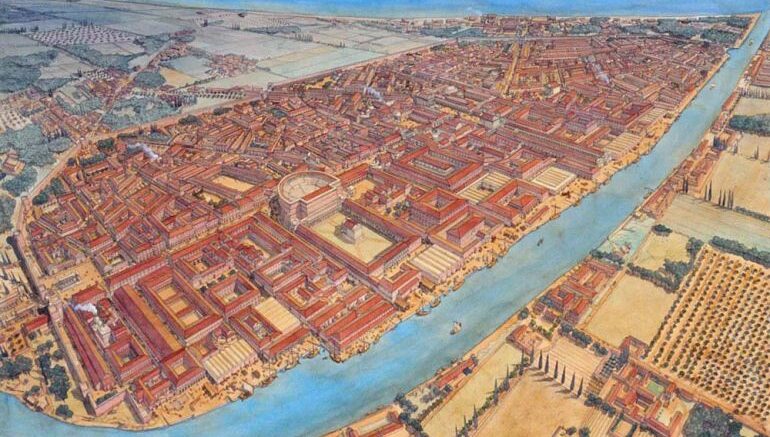



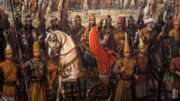
Be the first to comment on "Ostia Antica: Reconstruction and History of The Harbor City of Ancient Rome"